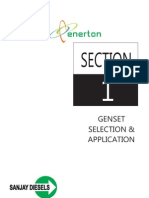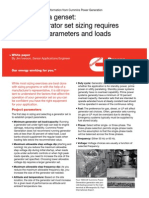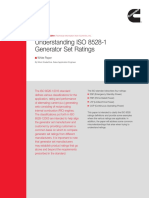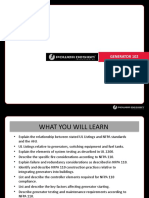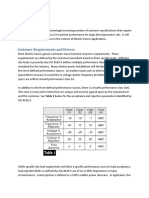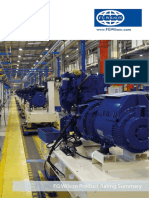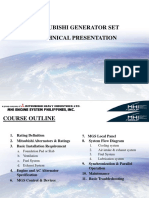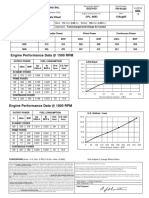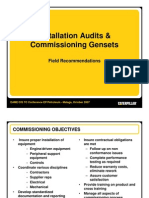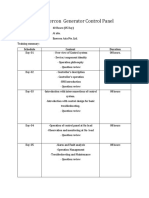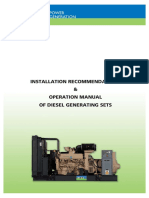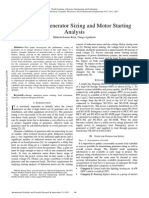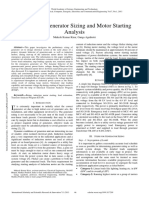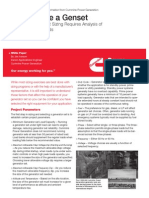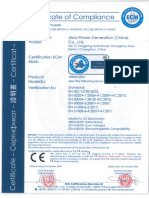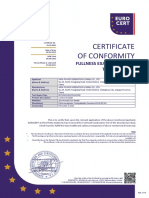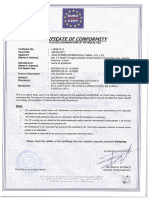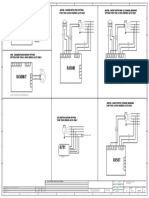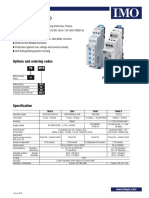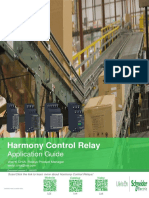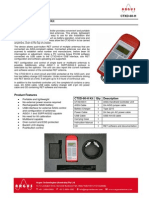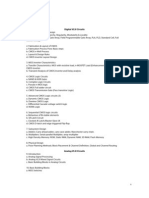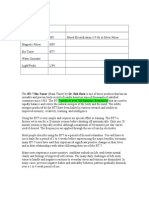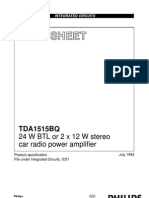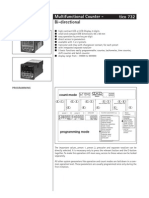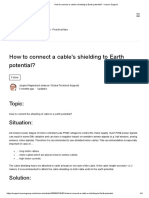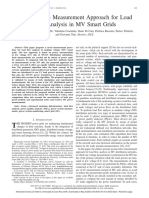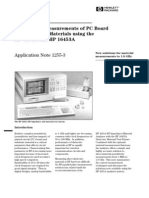Generator Set Load Considerations & Recommended Installation
Presented by Sean Manz of Cummins Western Canada
Load Considerations 1
�Sizing GenSets
Properly sizing a genset for a given application can be a difficult task. The purpose of this presentation is to inform individuals who design power generation equipment into their projects. Although quite thorough, this presentation does not contain all of the information, codes, and design guidelines required by the authorities having jurisdiction.
Load Considerations 2
�Sizing GenSets
There are seven main questions a designer needs to answer when properly sizing a genset for any application. These questions include:
What is the nature of the load that is to be supplied? What are the performance expectations of the power supply? What are the physical size constraints? What does the budget allow for? What fuel is available (by code?) for the power supply? What is the life expectancy of the power supply? And most importantly,
What is the power supply expected to accomplish?
Load Considerations 3
�Nature of the load
It is very important to determine what kind of load is going to be operated from a genset.
I.E. 100kW of resistive load vs. 100kW of inductive (motor) load vs. 100kW of non linear (SCR) load will require three different gensets
How is(are) the load(s) operated?
I.E. What kind of motor starters are used? What are the motors operating? When do the loads operate?
What power supply tolerances is(are) the load(s) able to operate on? Unlike a utility power supply which has relatively steady frequency and a varying voltage, a genset has a relatively steady voltage and a varying frequency.
Load Considerations 4
�Performance
Unlike a utility power supply (in most cases) a genset is a LIMITED power supply. A properly sized genset will power the loads within their design parameters, for example:
A typical magnetic motor starter contactor will stay energized during a 25% undervoltage condition.
Ideally the designer needs to determine what are the maximum voltage and frequency dip tolerances that the loads will accept.
Load Considerations 5
�Physical Size
How much space is available to install the required equipment? Consider all items potentially required including:
Genset Transfer switch Battery charger Batteries Exhaust system Fuel storage
In some large load situations it may be necessary to have two units operating in parallel.
Load Considerations 6
�Budget
An obvious constraint. The best solution to budget situations is to talk to your local power systems representative.
Load Considerations 7
�Fuel supply
What fuel supply is available? What fuel supply is reliable? What fuel supply is cost effective?
Load Considerations 8
�Life expectancy
Important for prime power applications. How many rebuilds will be required during the life of the project? Does the designed life expectancy of the project cover the possibilities of obsolescence?
Load Considerations 9
�What is expected
What is the genset expected to do? Take a moment to stop and think about your requirements since it is very easy to confuse yourself with features that you can probably do without. Who are the stakeholders in your design?
Client / end user Maintenance personnel Code authority / Fire Marshall
Load Considerations 10
�Site conditions
Elevation Temperature Humidity Atmospheric contaminate:
Dust Corrosive gasses Pollen
Load Considerations 11
�Ratings
Standby rating - Applicable for supplying emergency power for the duration of a normal power failure. There is NO SUSTAINED OVERLOAD capability available at this rating. Prime rating - Applicable for supplying power in lieu of commercially purchased power. Prime power is the maximum power available at a variable load for an unlimited number of hours. A 10% overload capability is available for a limited time (1 hour in 12 hours) Continuous rating - Applicable for supplying power continuously to a load for this rating. The continuous load rating does not change.
Load Considerations 12
�Load Considerations
Load Considerations 13
�Common Loads
Linear Non-linear Lighting Heating UPS / Battery charging Air conditioning Electric motors for:
pumps conveyors fans / HVAC artificial lift elevators
Load Considerations 14
�Linear Load
Voltage In-phase Current Leading Current Lagging Current
Current Proportional to Supply Voltage Current in or Out of Phase With Voltage Incandescent Light and Heating Loads
Load Considerations 15
�Nonlinear Load
Voltage
Non Linear Current
Current Disproportional to Supply Voltage Current in or Out of Phase With Voltage UPS, VFD, Battery chargers, etc
Load Considerations 16
�Nonlinear Loads
Load Induced Harmonic Currents (THDI) Cause:
Increased Losses and Heating Source Voltage Distortion (THDV) Objectionable Neutral Currents Loss of Generator Voltage Control (SCR Tracking)
Generator Voltage Distortion (THDV)
Possible Control Interaction: System Instability Notching Disables UPS Bypass Harmful to Connected Loads
Load Considerations 17
�Overcoming Nonlinear Loads
Oversized Alternators Recommended
Minimize Generator Voltage Distortion Compensate for Heating
Load Harmonic Filters (properly sized)
Leading PF on Lightly Loaded UPS Loss of Generator Voltage Control (Capacitive Vars Maintain Excitation)
Load Considerations 18
�Lighting
Lighting loads are fairly straightforward to calculate Typical formula is:
total load (kW) = lamp wattage + ballast wattage
Of course the power factor of the light should also be taken into consideration
Load Considerations 19
�Heating
Heating loads are also quite simple to calculate Electric heaters are typically resistive loads and run at unity power factor Keep in mind that some heaters have circulating fans that would need to be added to the calculation
Load Considerations 20
�UPS / Battery Charger
Static UPS systems use SCRs to convert AC to DC to charge the batteries Inverters change this DC voltage back to AC at the output These switching (firing) SCRs induce harmonic currents in alternators which cause waveform distortion, winding heating, and reduced efficiency Larger alternators combat this problem as they can absorb higher harmonic elements UPSs are sensitive to voltage and frequency fluctuations on the input especially when the bypass is enabled
Load Considerations 21
�UPS / Battery Charger
Past compatibility problems between gensets and UPS were common UPS suppliers recommended oversizing gensets 25 times in the past UPS suppliers have addressed compatibility problems and have developed cleaner conversion systems Typically now, to save costs, indicate to the supplier that the UPS may be powered from a genset instead of grossly oversizing the genset.
Load Considerations 22
�UPS / Battery Charger
For sizing purposes take the UPS full nameplate rating plus the battery charge rating Some UPS have a current limit setting which would be the total current required to supply power to loads and the battery These are non-linear loads Harmonic filters may be used to reduce the harmonics on the line. Beware when using filters on a lightly loaded UPS as these filters, typically capacitive filters, may cause a leading PF on the genset output.
Load Considerations 23
�Air Conditioning
Typically sized in tons Rule of thumb is 2 h.p. per ton. This is conservative for a lower efficiency unit More exacting load calculations would require the summation of all motors and heaters as part of the unit including remote cooling towers.
Load Considerations 24
�Motor Loads
Low and high inertia loads is determined by the moment of inertia of a rotating mass or a measure of resistance to acceleration by motor starting torque Rule of thumb - low inertia loads can be accelerated by a motor when the calculated service factor is 1.5 or less. High inertia loads.service factor >1.5 Low inertia = fans, centrifugal blowers, rotary compressors, rotary and centrifugal pumps High inertia = elevators, loaded conveyors, cylinder pumps and compressors, rock crushers
Load Considerations 25
�Typical Motor Characteristics
High Peak Starting Current Low Starting Power Factor High Peak kW During Acceleration Torque Proportional to Square of Voltage
600
PERCENT TORQUE, POWER, CURRENT
Motor Current
1.0 POWER FACTOR (LAGGING) 0.2 100
Motor Power Factor
100
Motor Torque Load Torque
20 40 60 80 PERCENT MOTOR RATED SPEED
Load Considerations 26
�Motor Starting Methods
Full voltage starting: High inrush current:
Typically 6 times - standard efficiency Up to 12 times - high efficiency
Reduced voltage starting: Lowers inrush current Beware of reduced voltage resulting in insufficient motor starting torque to the load (i.e Torque = Voltage2)
Load Considerations 27
�Motor Starting Methods
Variable Frequency Drives (VFDs) Classified as non linear load Induces harmonics Size for the drive, not the motor Oversized alternator required for:
overheating caused by harmonics reduced THDV resulting from lower alternator reactance
Conventional VFDs:
Rule of thumb = oversize alternator 100%
VFD w/ PWM:
Lower harmonics Rule of thumb = oversize alternator 40%
Load Considerations 28
�Motor Starting Methods
Soft Starts - Solid State trade name Classified as non linear SCR firing Frequency specific as frequency dictates SCR firing timing Current limit Auto bypass ASK THE MANUFACTURER ABOUT POWERING THE STARTER FROM A GENSET!!!
Load Considerations 29
�Motor Starting Methods
Part winding, auto transformer, cap start - run, etc: Motor starting torque
Load Considerations 30
�General Motor Starting Considerations
Rule of Thumb: 1/2 HP per kW Rule of Thumb: Start What Will Run (If Dip Acceptable) Apply Reduced Voltage or Soft Start Only to Low Inertia Loads Watch Out for Transition on Reduced Voltage Starters Start Large Motor Loads First Specify:
Minimum of 90% Sustained Voltage for Acceptable Motor Torque PMG for Large Motor Loads and Solid State Starters
Watch Cyclic Loads
Load Considerations 31
�Generator Set Characteristics
Limited Power Source
Load Change Yields Voltage and Frequency Disturbance Engine kW Alternator kVA
Several Alternator Sizes Available
Temperature Rise Extended Range Full Single Phase Output
Excitation Systems
Self Excited Separately Excited
Load Considerations 32
�Self Excited (Shunt) Generator
Regulator Power Sensing Reference
Main Stator
Exciter Field
Main Field Rotating Diodes Power Input Exciter Rotor
Load Considerations 33
�Separately Excited (PMG) Generator
Regulator Reference Power Sensing
Main Stator
Exciter Field
PMG Stator PMG Rotor
Main Field Rotating Diodes Power Input Exciter Rotor
Load Considerations 34
�Generator Set Comparison
Self Excited
Higher Voltage Dips Collapsing Field Single Phase Average Sensing Voltage Unbalance Lower Tolerance for Non-linear Loads Good Motor Starter
Separately Excited
Lower Voltage Dips Sustained Fault Three Phase RMS Sensing Voltage Centering Non-linear Load Immunity Excellent Motor Starter
Load Considerations 35
�Conclusions and Recommendations
Try Stepping Loads to Optimize Generator Set Size
Requires Multiple Transfer Switches or Other Load Control Stabilize Generator Between Steps
Start Large Motors and Life Safety Loads First Whenever Non-linear Load Content Exceeds 15%, Specify PMG and Isochronous Governing (Always With UPS) Consider Impact of Cyclic or Other High Surge Loads Avoid Leading Power Factor Apply Reasonable Limits on Generator Transient Performance and Allowable Frequency Slew Rate Analyze Load Unbalance When 3 Phase UPS Supplies Single Phase Load (Single Phase Bypass)
Load Considerations 36
�Load Considerations 37
�Genset Installations
The following presentation will discuss associated items and criteria for properly designing and installing gensets This presentation will cover both electrical and mechanical considerations While there are many different methods of installing generation equipment, this presentation is for the purpose of informing only. It is not to be used specifically for design applications. This information is taken from the Cummins T-030 manual found on our literature CD.
Load Considerations 38
�Preliminary Design
Why is a back up generator set required?
Emergency loads, critical load support, life safety loads
It is important to determine what the loads do. This will determine any specific codes that you need to follow, including but not limited to:
CSA C282-00 - Emergency Electrical Power Supply for Buildings CSA Z32-99 - Electrical Safety and Essential Electrical Systems in Health Care Facilities Canadian Electrical Code
Load Considerations 39
�Sizing
Now that you know what purpose the genset is to serve, you will need to size the genset properly. For the purpose of this presentation, it is assumed that the Sizing gensets presentation has already been completed or that the class is already aware of the common practices in sizing gensets.
Load Considerations 40
�Fuel Supply
So we know what our genset will do and what size is required, we still need to know what kind of fuel it will burn. Again, the type fuel used by the genset may be dictated by the codes having authority. You typically cant go wrong with choosing a diesel genset with respect to code regulations and purchase cost.
Load Considerations 41
�Location
Where are we going to put this thing?
Outside or inside? Existing structure(s) Location of loads, distribution panels, service entrance Availability/location of genset support power Security from flooding, fire, vandalism, weather Contamination of environment Possible simultaneous damage to normal and emergency service Service accessibility for both minor and major repairs & routine maintenance (including 100% load tests)
Load Considerations 42
�Outdoor Location Considerations
Airborne noise and noise treatment Skin tight, drop over or walk in enclosure Proximity of enclosure to other structures with maintenance and repairs in mind Security fences and sight barriers Property line distances and available property PREVAILING WIND Grounding locations Architectural Fuel location
Load Considerations 43
�Indoor Location Considerations
Airborne noise and noise treatment Code issues - devoted room, fire walls Accessibility of equipment with maintenance, testing and repairs in mind Ventilation and ventilation effects on other equipment PREVAILING WIND Above grade structure capabilities Grounding locations Provisions for artificial load connection Fuel location and storage
Load Considerations 44
�Fuel Storage Considerations
Capacity of tank
Can be driven by Codes and local authorities Consider fuel turnover when testing genset
Environmental concerns Location of tank
Filling Proximity to genset Day tank and transfer pumps may be required
LPG storage - consult local authority
Load Considerations 45
�Noise Considerations
City bylaws and local authorities Location of inlets and discharge louvers Directional hoods Block walls and or trees/shrubs Specific acoustical materials Low flow radiators or water to water heat exchangers
Load Considerations 46
�Emissions Considerations
????? Kyoto ????? Company guidelines EPA requirements Emissions credits Exhaust catalysts and aftertreatments
Load Considerations 47
�Wind Considerations
The prevailing wind of the location is quite important to know as two very serious problems can arise if the wing direction is not taken into consideration:
The wind may blow the engine exhaust to unfortunate locations such as building fresh air inlets, residential areas or busy roads The radiator air flow may be restricted if significant wind is blown directly into the engine radiator discharge
Load Considerations 48
�Weather Considerations
More specific for outdoor gensets, weather plays an important role in installation design
Snow/wind loads on buildings and enclosures Snow/leaf drifting by inlets or clogging outlets Cold/hot ambient temperatures Critters and insects Airborne particulate, dust, pollen, etc. Humidity
Some of these items will determine the genset accessories required.
Load Considerations 49
�Load Considerations 50
�Questions?
Load Considerations 51
�THANK YOU
Load Considerations 52

